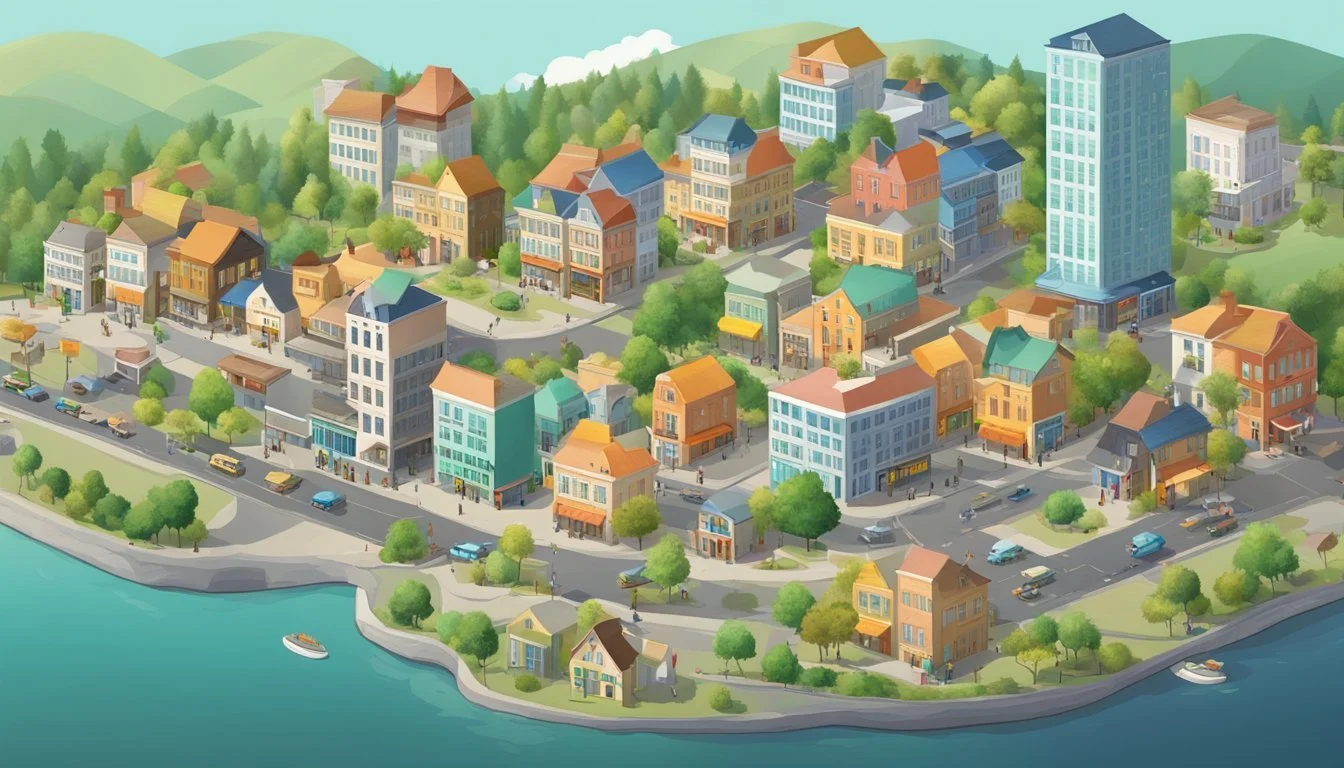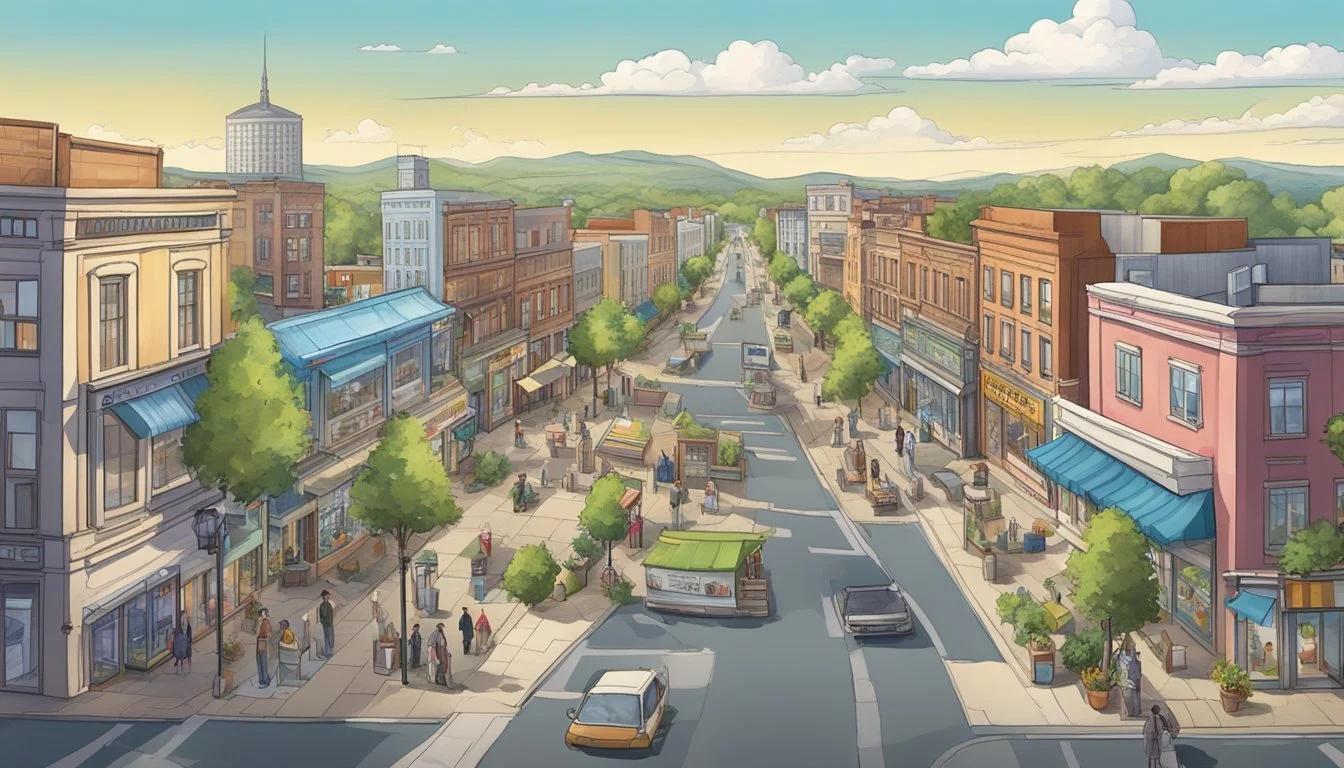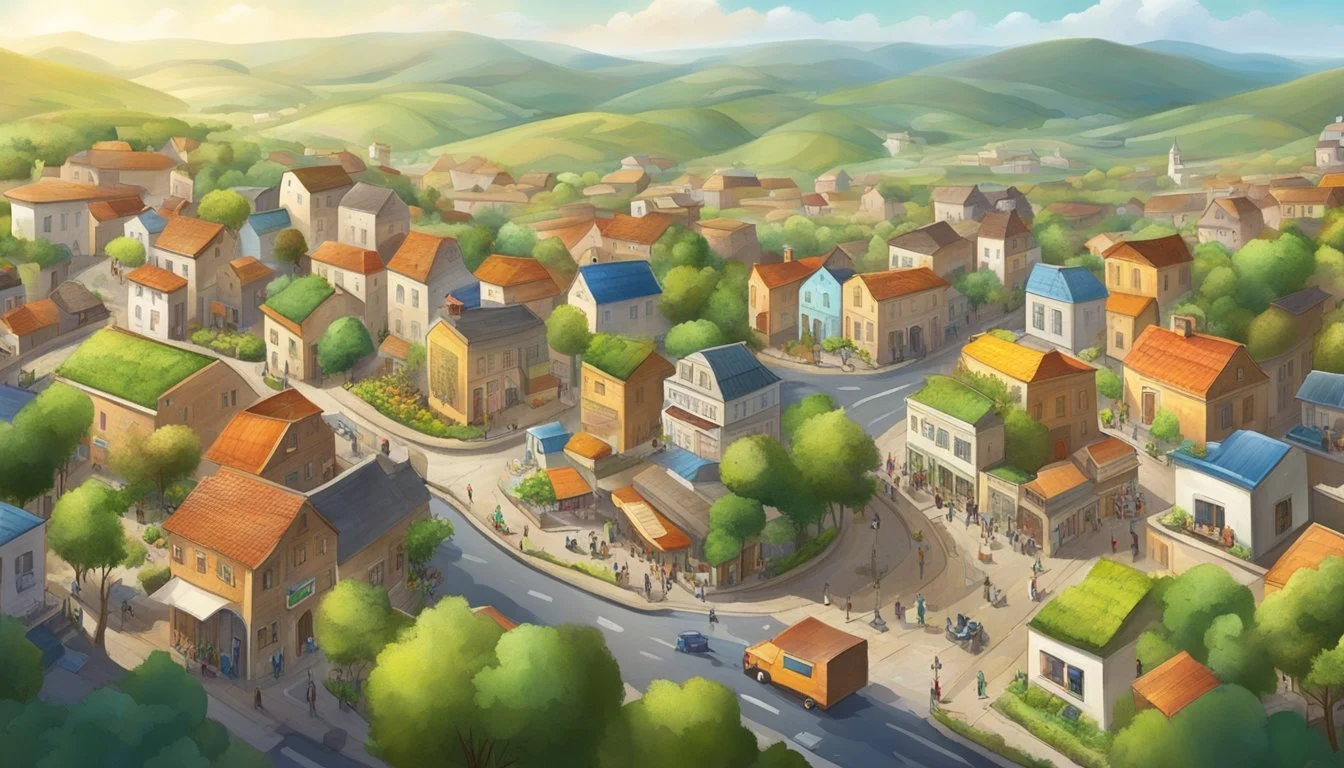How Free Land Can Boost Local Economies
Strategies for Sustainable Growth
Free land can significantly impact local economies by stimulating various sectors such as tourism, recreation, and job creation. Implementing land conservation as a public policy can lead to long-term financial benefits that support rural areas and increase employment opportunities. Protected areas like nature reserves not only conserve biodiversity but also drive economic growth without adverse effects on local economies.
Research indicates that public lands not only serve environmental purposes but also enhance economic vitality by attracting tourists and new residents. This influx bolsters local businesses and leads to increased spending within the community. Furthermore, conserving land can also mitigate natural disasters and save costs on healthcare by preserving ecosystems that filter drinking water and provide other essential services.
Studies underscore that land conservation efforts can boost local employment rates, illustrating a positive correlation between protected areas and economic growth. By promoting sustainable tourism and outdoor activities, these initiatives bring consistent and diverse revenue streams to local economies, establishing a balance between environmental sustainability and economic development.
Economic Impact and Local Growth
Free land initiatives can significantly influence local economies by boosting GDP and employment rates, enhancing property values and tax revenue, and promoting the outdoor recreation economy.
Boosting GDP and Employment Rates
Free land can lead to substantial economic growth. By attracting new businesses and residents, these programs stimulate local job creation, directly increasing employment rates. Businesses established on these lands contribute to the GDP by producing goods and services.
Shifting from open land to developed opportunities creates a cyclical boost in economic activities. Job growth in sectors such as construction, retail, and services becomes evident. The introduction of new industries can diversify the local economy, making it more resilient against economic downturns.
Enhancing Property Values and Tax Revenue
The development of free land often results in a rise in nearby property values. New establishments, infrastructure upgrades, and improved amenities enhance the region's attractiveness, leading to an influx of residents and investors.
Higher property values translate to increased tax revenue for local governments. This revenue can be reinvested into public services, education, and community projects, further enhancing the quality of life and drawing more people to the area. Long-term, higher median household incomes and improved communal facilities create a sustainable growth pattern.
The Role of Outdoor Recreation Economy
Public lands, such as national parks and recreational areas, significantly contribute to the local economy through outdoor recreation. These areas attract tourists, boosting local businesses like hotels, restaurants, and retail stores.
For example, the redesignation of White Sands National Park in 2019 led to noteworthy local economic growth. The influx of visitors supports a variety of jobs in hospitality, tour operations, and maintenance services. Outdoor activities improve both physical and mental health, contributing to a higher quality of life and making the area more appealing for permanent residents.
By leveraging natural resources and scenic landscapes, local economies can thrive sustainably, ensuring continuous economic benefits.
Environmental Conservation and its Benefits
Environmental conservation offers significant advantages, including protecting biodiversity and maintaining crucial ecosystem services such as clean water and flood protection. These benefits are vital for both the environment and local economies.
Protecting Biodiversity and Ecosystem Services
Conservation efforts in protected areas and nature reserves play a critical role in preserving biodiversity. By providing safe habitats for various species, these areas help maintain ecological balance. Protected areas support numerous ecosystem services such as pollination, soil fertility, and air purification, which are essential for sustainable agriculture and human health.
Nature reserves also enhance local economies through eco-tourism. Visitors attracted by diverse wildlife generate income for nearby communities and create jobs. Moreover, safeguarding biodiversity ensures genetic diversity, which is invaluable for scientific research and resilience against environmental changes.
Maintaining Clean Water and Flood Protection
Effective land conservation is crucial for maintaining clean water supplies. Forests and wetlands in protected areas naturally filter water, reducing the need for costly water treatment facilities. These ecosystems also play a significant role in managing water cycles and replenishing aquifers, which are essential for agriculture and drinking water.
In addition to clean water, conservation helps with flood protection. Wetlands and forests act as natural barriers, absorbing excess rainwater and reducing the impact of floods. Investing in nature reserves ensures these natural defenses remain intact, protecting communities and reducing economic losses from flood damage.
Community Development and Socioeconomic Benefits
Provision of free land can significantly transform socioeconomic conditions in communities, especially rural areas and gateway communities. This initiative promotes economic growth by enhancing cultural and recreational activities, thereby improving the quality of life and population sustainability.
Strengthening Rural and Gateway Communities
Free land programs are pivotal for rural areas and gateway communities, often characterized by limited economic opportunities and population decline. By offering land incentives, these areas attract new residents and businesses, driving local economic impact.
Local governments see increased employment rates as businesses move in. Moreover, the influx of residents brings diverse skills, improving productivity across various sectors. School enrollments rise, ensuring better funding and educational resources.
Additionally, infrastructure improves with investment in new homes and facilities. This not only boosts the local economy but also enhances the overall quality of life, making these communities more sustainable in the long term.
Cultural and Recreational Enhancement
Allocating free land contributes to the cultural and recreational vitality of a community. New parks, trails, and recreational centers provide residents with spaces for leisure and social gatherings, which are crucial for mental and physical well-being.
Investment in cultural projects fosters tourism, attracting both visitors and residents. This can lead to economic gains through increased spending in local businesses, boosting the regional economy.
Programs focusing on cultural and recreational activities can transform seemingly isolated rural areas into vibrant, attractive destinations. By improving the social fabric of communities, these enhancements, driven by land availability, pave the way for a more connected and engaged population.
Sustainable Growth Strategies
Effective sustainable growth strategies require balancing economic development with the preservation of nature. By thoughtfully incorporating natural elements into urban planning, local communities can foster resilient, thriving economies.
Balancing Development and Nature Preservation
The relationship between economic development and nature preservation involves significant economic tradeoffs. Development projects in biodiverse regions must evaluate the environmental impact meticulously.
Biodiverse regions often provide essential ecosystem services that support agriculture, tourism, and water purification. Developers should prioritize sustainable construction practices that minimize habitat disruption.
Policies that enforce environmental regulations and encourage green infrastructure, such as green roofs and rain gardens, help mitigate the ecological footprint. Incentives for preserving natural habitats, like tax breaks or grants, can also promote responsible development.
Incorporating Nature into Urban Planning
Incorporating nature into urban planning fosters sustainable growth by enhancing urban green spaces and promoting public health. Urban planners can integrate parks, community gardens, and green corridors within city landscapes to ensure a harmonious blend of development and nature.
Strategies like mixed-use developments ensure that residential, commercial, and recreational spaces coexist, reducing the need for extensive travel and lowering carbon emissions. Urban planners must also consider adaptive landscapes to manage climate change impacts, such as increased rainfall or temperature fluctuations.
Public participation in planning processes ensures that community needs align with ecological sustainability goals. By advocating for city design that includes ample natural elements, planners can create more liveable, eco-friendly urban environments.
Tourism, Recreation, and Economic Opportunities
Leveraging public lands and promoting local arts and heritage generate significant economic activities. These strategies not only attract visitors but also create sustainable jobs and vibrant communities.
Leveraging Public Lands for Economic Gain
Public lands can act as magnet areas for tourism and recreation, providing a substantial boost to local economies. In 2021, the outdoor recreation economy accounted for $454 billion, emphasizing its importance. By developing trails and parks, communities can draw thousands of visitors.
These visitors spend money on local services such as lodging, dining, and shopping. For instance, new trails can generate millions in increased wages and tax revenue. The Baileys Trail System, for example, is projected to bring in $6.9 million in higher wages over a decade.
Investing in public lands also promotes environmental conservation. This attracts eco-tourists and adventure enthusiasts. These tourists prefer destinations that maintain natural beauty, further driving local economic benefits.
Promoting Arts and Heritage for Local Development
Arts-based industries and cultural tourism also provide economic opportunities, especially in rural areas. By highlighting local arts, crafts, and heritage, communities can attract a different class of tourists. These tourists are often interested in history, culture, and unique local experiences.
Local festivals, galleries, and artisan markets create a thriving economy centered on creativity. Arts and heritage events not only bring in tourists but also foster local talent. This can lead to more permanent economic activities and boost community identity.
Additionally, integrating arts into tourism can alleviate poverty by providing alternative income streams. This strategy can revitalize main streets and create cohesive community development plans. Engaging local artists and historians ensures cultural preservation and sustainable growth.
Infrastructure and Real Estate Considerations
Effective infrastructure and well-planned real estate developments are crucial for leveraging free land to boost local economies. Investments in roads and accessibility, along with a solid understanding of real estate market dynamics, are paramount for sustainable economic growth.
Analyzing the Impact of Roads and Accessibility
A comprehensive road network plays a significant role in economic development by enhancing accessibility. Improved roads reduce travel time, lower transportation costs, and increase trade efficiency. This, in turn, raises property values and attracts businesses and residents.
Road infrastructure projects need careful planning. This includes considering traffic flow, environmental impact, and connectivity to major highways and urban centers. Building permits and regulatory approvals must be obtained promptly to advance these developments without unnecessary delays.
Accessibility is not limited to roads. Public transportation and other forms of connectivity can also significantly uplift a region's economic prospects. Integrated transit systems add to the amenity value of properties, making places more attractive for investments and habitation.
Understanding Real Estate Market Dynamics
Real estate market dynamics are critical in how free land can enhance local economies. The demand for residential, commercial, and industrial properties influences the allocation of free land. High-demand areas typically see an increase in property values, making them attractive investments.
The approval process for building permits can either propel or hinder development. Streamlining this process ensures that real estate projects commence and complete on schedule, stimulating economic activity.
The market is also sensitive to regional economic conditions. Economic incentives such as tax breaks and grants for real estate developers can spur activity in less developed areas. Moreover, communal amenities such as parks and shopping centers add considerable value, making it essential to consider both the economic and social impacts of real estate projects.
Effective coordination between land use planning and economic development efforts ensures the optimal use of free land, fostering growth and prosperity in local communities.
The Intersection of Conservation and Economics
Effective conservation efforts can simultaneously protect biodiversity and support economic growth. Protected areas, such as national parks and conservation zones, offer practical examples of how both goals can be achieved without sacrificing one for the other.
Examining Win-Win Scenarios for Conservation and Growth
Protected areas and conservation zones demonstrate that environmental protection need not impede economic progress. Studies indicate that nature reserves can preserve biodiversity while fostering local economic development.
About 91% of the nearly 10,000 protected areas studied showed limited loss of natural land compared to unprotected regions.
Additionally, these regions often support local economies by creating job opportunities and promoting tourism. For example, national parks attract visitors, boosting local businesses and generating revenue. Successful conservation policies can also enhance quality of life by preserving ecosystem services such as clean air and water.
Case Studies: National Parks and Protected Areas
Various national parks and protected areas illustrate the synergy between conservation and economic growth. Yellowstone National Park, for instance, safeguards diverse ecosystems while contributing significantly to the economy through tourism.
In another study, nearly half of the surveyed protected areas managed to protect natural lands while simultaneously benefiting local economies.
Moreover, conservation efforts under policies like the Endangered Species Act have shown that protecting wildlife can coexist with human economic activities. These examples underscore that properly managed conservation initiatives can deliver dual benefits, supporting both environmental sustainability and economic development.
Wildlife and Natural Resources
Protecting wildlife and natural resources can significantly contribute to local economies while ensuring the sustainability of ecosystems. Key considerations include the impacts on endangered species and habitats, as well as responsible harvesting practices.
Impacts on Endangered Species and Habitats
Protection of wildlife and maintenance of natural habitats can help prevent species extinction and biodiversity loss. A study revealed that 91% of protected areas experienced little to no loss of natural land, highlighting their effectiveness in conservation.
Maintaining biodiversity offers economic benefits. Nature tourism, which relies on these habitats, boosts local economies by attracting visitors. In regions like Africa, wildlife economies thrive, relying on natural landscapes to sustain tourism and local employment.
Economic incentives for conservation include tourism-related activities such as guided tours, bird watching, and wildlife photography. These activities generate revenue while fostering appreciation for natural ecosystems. Moreover, safeguarding natural habitats helps preserve essential ecosystem services like water filtration and climate regulation.
Harvesting Natural Resources Responsibly
Responsible harvesting of natural resources, such as non-timber forest products, hunting, and fishing, is crucial for sustainable economic growth. Utilizing resources without depleting them ensures long-term benefits for local communities.
Non-timber forest products, including fruits, nuts, and medicinal plants, are valuable economic assets. Their sustainable harvest provides income while preserving forest ecosystems. For instance, Southeast Ohio transitioned from industries like coal mining to harnessing its rich natural resources for recreation and tourism, revitalizing the region's economy.
Controlled hunting and fishing can also contribute to local economies. These activities, when regulated, support wildlife management and generate revenue. Licenses, permits, and fees fund conservation programs, balancing economic interests with ecological stewardship.
In summary,
Protecting natural habitats prevents biodiversity loss.
Sustainable practices ensure long-term economic benefits.
Tourism and responsible resource use generate revenue.
Local and Global Perspectives
Examining the impact of free land on boosting economies reveals important insights at both local and global levels. From tailored economic strategies to international best practices, this analysis dives into the underlying mechanisms.
Comparative Analysis of Local vs. Global Economies
Local economic development strategies often focus on addressing specific community needs such as housing, job creation, and infrastructure. Free land initiatives can directly stimulate these aspects by lowering entry barriers for new businesses and housing projects.
In contrast, global economic perspectives emphasize large-scale factors like international trade, foreign direct investments, and macroeconomic policies. Utilizing free land on a global scale often involves multi-country agreements and can drive competitiveness in emerging markets, making it crucial to balance national interests with international demands.
International Examples: Amazon and Southeast Asia
The Amazon region, rich in natural resources, presents unique opportunities. Governments providing free land can encourage sustainable agriculture and eco-tourism, fostering local economies while conserving biodiversity. These initiatives must navigate environmental policies and local community interests to be effective.
In Southeast Asia, countries like Vietnam and Thailand have successfully used free land policies to attract foreign investment in manufacturing and technology sectors. This not only boosts local employment but also integrates these economies into the global supply chain. The tradeoffs often include managing environmental impact and ensuring equitable growth distribution across regions.







